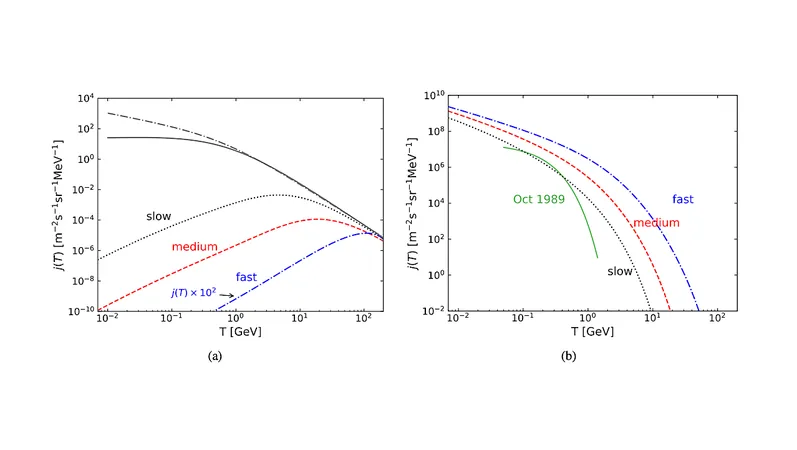
The Crucial Role of Cosmic Rays in Shaping Early Earth Chemistry: A Must-Read for Astrobiology Enthusiasts!
2025-04-04
Author: Arjun
The Influence of Cosmic Rays on Prebiotic Chemistry
Cosmic rays (CR) from both solar and Galactic sources have a profound ionizing influence on Earth's atmosphere, playing a pivotal role in the formation of prebiotic molecules essential for the emergence of life. Scientific research has increasingly emphasized the significance of the H2-dominated atmosphere that followed cataclysmic ocean-vaporizing impacts on early Earth. This environment is believed to be particularly conducive to prebiotic chemistry.
Groundbreaking Research on Cosmic Ray Interaction
In a groundbreaking study, researchers modeled the transport of solar and Galactic cosmic rays through the early Earth’s atmosphere, specifically set at 200 million years post-impact. Their objective was clear: to unveil the differences in ionization rates, denoted as ζ, particularly at the Earth's surface during a time when the Sun was notably active.
Monte Carlo Simulations and Findings
Utilizing advanced Monte Carlo simulations, these scientists elucidated the cosmic ray spectra as a function of altitude. They calculated ζ and the ion-pair production rate, Q, at varying altitudes, influenced by both solar and Galactic cosmic ray interactions. Notably, the research found that the solar wind velocity and magnetic field strength—variables highly dependent on the Sun's rotation rate (Ω)—significantly modulated cosmic ray transport.
Exploring Solar Rotation Rates
The study considered different solar rotation rates ranging from 3.5 to 15 Ω⊙, revealing intriguing insights. For instance, when accounting for possible variations in the Galactic cosmic ray spectrum over billion-year timescales, researchers compared ζ rates from differing scenarios. They also assessed how a planetary magnetic field could suppress cosmic ray spectra.
Key Findings About Ionization Rates
The astonishing finding? For most cases in the early Earth atmosphere, solar cosmic rays were the dominant source of ionization. Specifically, the ionization rates at the young Earth's surface varied between 5 x 10^-21 s^-1 and 1 x 10^-16 s^-1, depending on whether the Sun was a fast rotator or not. This suggests that if the young Sun had a rapid rotation, solar cosmic rays significantly influenced surface chemistry during the critical period of life's inception.
Implications for Astrobiology
This enlightening research, led by scholars S. R. Raeside, D. Rodgers-Lee, and P. B. Rimmer, not only advances our understanding of early Earth conditions but also impacts the broader field of astrobiology. As we ponder the emergence of life beyond Earth, insights into the role of cosmic rays in shaping atmospheres offer tantalizing clues.
Looking Ahead
Stay tuned for more exciting revelations in Earth and planetary astrophysics, as the mysteries of our origins continue to unfold!


 Brasil (PT)
Brasil (PT)
 Canada (EN)
Canada (EN)
 Chile (ES)
Chile (ES)
 Česko (CS)
Česko (CS)
 대한민국 (KO)
대한민국 (KO)
 España (ES)
España (ES)
 France (FR)
France (FR)
 Hong Kong (EN)
Hong Kong (EN)
 Italia (IT)
Italia (IT)
 日本 (JA)
日本 (JA)
 Magyarország (HU)
Magyarország (HU)
 Norge (NO)
Norge (NO)
 Polska (PL)
Polska (PL)
 Schweiz (DE)
Schweiz (DE)
 Singapore (EN)
Singapore (EN)
 Sverige (SV)
Sverige (SV)
 Suomi (FI)
Suomi (FI)
 Türkiye (TR)
Türkiye (TR)
 الإمارات العربية المتحدة (AR)
الإمارات العربية المتحدة (AR)